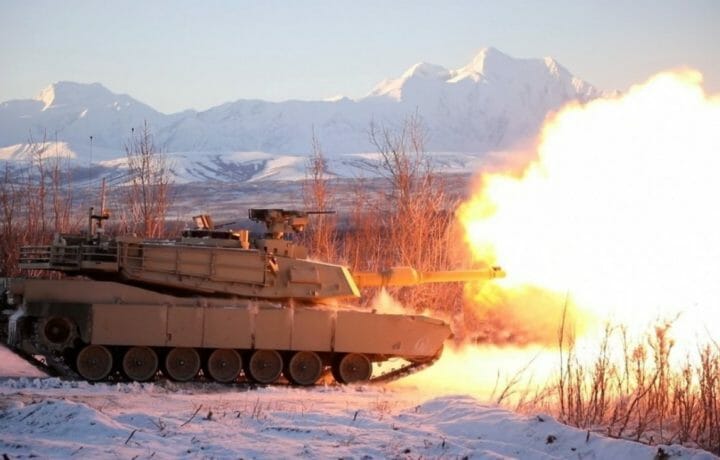According to a report from the Army Science Board, a federally-sanctioned independent group of experts that advises the Secretary of the Army, published in late August, the U.S. Army’s M1 Abrams main battle tank (MBT) will be sufficient to support missions conducted from 20240 and beyond. The study further called for one or more types of fifth-generation combat vehicles (5GCV) to effectively meet operational demands in the coming decades.
The future tanks could include a next-generation M1 derivative, along with lighter “tanks” that are armed with larger caliber guns or hypersonic anti-tank missiles, and even unmanned ground vehicles.
“Based on our findings, The M1 Abrams will not dominate the 2040 battlefield. All of the M1’s advantages in mobility, firepower, and protection are at risk. The M1A2 SEP V3&4 upgrades will improve effectiveness but will not restore dominance. Near transparency in all domains will significantly increase the lethality our forces will experience. China and Russia have studied our forces and doctrine and are fielding countermeasures. We will continue to have to fight outnumbered, exacerbated by a low MBT operational readiness rate and an aging fleet,” the report added.
The study considered a number of factors and included lessons learned from Israel’s invasion of southern Lebanon to confront Hezbollah in 2006 and into Gaza in 2014, as well as Russia’s war in Ukraine.
60 Years of Service
Though 2040 is essentially around the corner considering that the U.S. Army would need to develop and then produce a fleet of MBTs to replace the M1 Abrams, it should be noted that the tank first entered service in the early 1980s. It would be impressive that the platform could remain in service for that long – especially as 60 years prior, the U.S. Army employed its first-ever tank, the French-made Renault FT-17.
More than two dozen tanks of various sizes were developed and saw service in the time between the FT-17 and the M1 Abrams.
In addition, the war in Ukraine has certainly cast the spotlight on the vulnerabilities of tanks on the modern battlefield where unmanned aerial systems (UAS) can drop small but deadly ordnance while loitering munitions (kamikaze drones) have also been employed to destroy MBTs.
Moreover, Russia saw hundreds of its tanks destroyed by man-portable anti-tank weapons in the ongoing conflict. There have also been reports that Hamas has issued pamphlets to its fighters on how to target Israeli tanks with such weapons.
Did the Abrams See the Wrong Updates?
The 2,500 Abrams now in service with the U.S. military aren’t the same vehicles that rolled off the assembly line when TV viewers tuned in to see Dallas every Friday night.
While some of the upgrades have truly improved the tank, some of the more recent updates were specific to the needs encountered in the Global War on Terror (GWoT) in Afghanistan and Iraq and may be ill-suited to a conflict with a near-peer adversary such as China.
“Over the past twenty years, changes in the way combat is conducted have been met by ‘upgrading’ the Abrams’ armor, thereby increasing its weight,” explained tank historian John Adams-Graf, editor of Military Vehicle Preservation Society’s History in Motion.
“For example, today’s M1A2 System Enhancement Package Version 3 (SEPv3) is more than 20 tons heavier than the original M1,” Adams-Graf told ClearanceJobs. “This emphasis on passive and reactive armor for defense rather than exploring protection through active defense methods has rendered the once-formidable tank into a heavy, rolling deathtrap.”
Thus, the M1 Abrams is a tank designed in the 1970s for a war against the Soviet Union, modified for a war against insurgent forces in the early 2000s, and thus probably isn’t ideally suited for a conflict against a nation like China a decade from now. It would be much like sending the FT-17 – a very innovative tank for its day at the end of the First World War – into combat against World War II tanks.
“As the lethality of unmanned weapons increases over the next two decades, the Abrams’ vulnerability will continue to grow, and its effectiveness will diminish,” added Adams-Graf. “Military planners learned valuable lessons about how to adapt to new battlefield conditions during the fighting in Iraq and Afghanistan. Hopefully, that ability to assess and be innovative will continue.”




